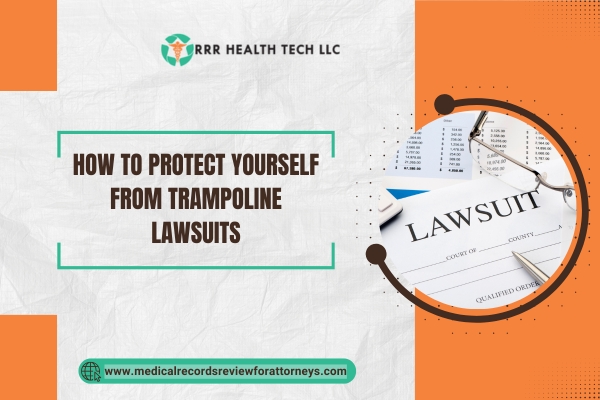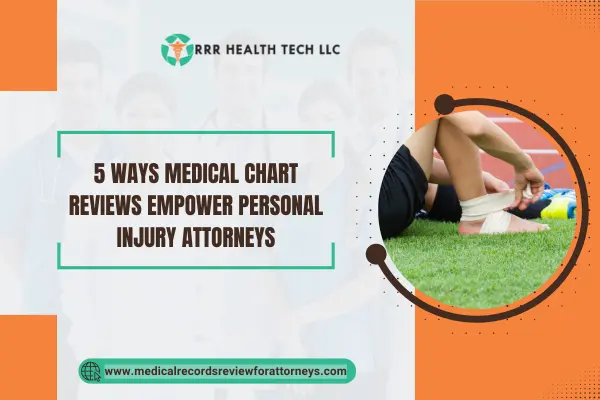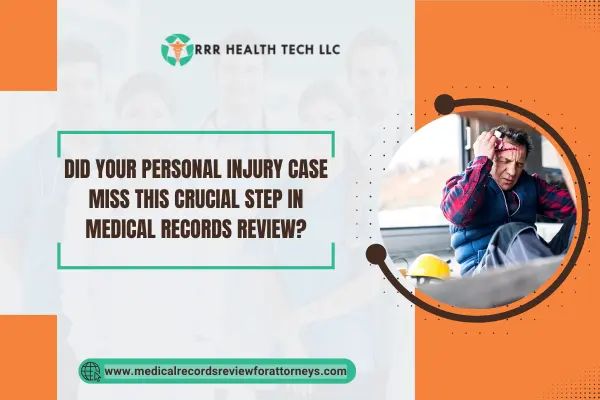
Introduction
A trampoline can be a source of injury to children even though it can be entertaining to use. If you are a homeowner, it is important to know how to safeguard yourself from the trampoline related lawsuits which may come up. Towards this end, I’ll discuss trampoline safety, legal issues, and the role of medical records review in assisting attorneys in personal injury cases.
Common Types of Trampoline Injuries
• Fractures and Sprains: These are the most common injuries affecting users of the trampoline.
• Head and Neck Injuries: Injuries of this kind can result in paralysis.
• Soft Tissue Injuries: These include bruises and muscle strains that result from landing hard onto the trampoline.
Statistics on Trampoline Injuries
• It has been reported by the American Academy of Paediatrics that over 100,000 people injure themselves using a trampoline and have to visit an emergency room every year.
• Most of these injuries are in kids aged between 5 to 14 years.
Legal Implications of Trampoline Use
Premises Liability
• Definition: With this term, it is understood that a homeowner is liable for any injuries sustained on his/her property due to some dangerous features of the property.
• Duty of Care: A homeowner must take reasonable steps, such as regularly checking to ensure the trampoline is not broken, to make sure that no users happen to be injured while they are using his or her trampoline.
Typical Legal Assertions
- Negligence: A homeowner may be found negligent if he or she does not take reasonable steps to protect other people on his or her property, and the homeowner is usually responsible for the stroller injuries.
- Children Nuisance Doctrine: An owner of property is responsible for a child injury if the child injury was due to a certain hazard on the property that the child was looking for.
Ways to Prevent Trampoline Lawsuits
Putting in Place Safety Protocols
- Correct Trampoline Installation: Make sure that the trampoline has been properly installed.
- Using Padded Safety Nets: Injury-cognizant safety nets and padding must be provided.
- Trampoline Supervision: Users less than twelve years old should always be supervised.
Setting Use Guidelines
• Limit by Age: Set a minimum age for trampoline users.
• Limit by Weight: Set a maximum weight for users.
• Single User per Jump: Attempted collisions by two people jumping must be minimized by encouraging only one person to jump at a time.
Routine Upkeep
• Inspections: Trim edges of the mat and check for elastic ropes for wear or damage over time.
• Mat Repair: Elastic ropes that hold the jumping surface must be repaired or replaced immediately.
How Reviewing Medical Records Help in Cases Related To Trampoline Injuries
Why Medical Attestations Are Important
• Collecting Evidence: Medical records contain important information that documents the injuries a claimant received in a trampoline accident.
• Proving A Claim: Helps prove the claim by linking the accident to the injuries sustained, which is critically important for legal claims.
How We Help Attorneys
• We offer attorney support by performing detail-oriented reviews of a client’s medical history to locate supporting documentation relevant to the claim.
• Our services enable attorneys to appreciate the magnitude of their clients’ injuries and the corresponding expenses involved.
Case Studies
Case Study 1: Injury to a Child on a Trampoline at Home
• Overview: A 10-year-old child suffered a broken arm after falling off a trampoline.
• Challenges: The child s parents sued the property owner for negligence of duty.
• Solutions: The property owner proved, through maintenance records, that the premises were appropriately cared for and that safety precautions were taken.
Case Study 2: Adult Injury at a Trampoline Party
• Overview: An adult sustained a concussion while jumping on a trampoline at a friend’s house.
• Challenges: The injured party argued that the trampoline was unsafe without adequate side padding.
• Solutions: The property owner proved that proper safety protocols were observed, and the injured party signed a consent form.
• Compensation: The case was dismissed and the defendant property owner was not found liable to compensate.
Conclusion
Trampoline lawsuits can be avoided by staying proactive with legal compliance and safety. Homeowners can incorporate clear safety guidelines and trampoline maintenance routines in order to mitigate their liability. Medical records review has a vital part to play as attorneys prepare cases for clients with trampoline injuries. Legal experts can represent their clients better and make sure they get the compensation they are entitled for by using strong medical documents.


